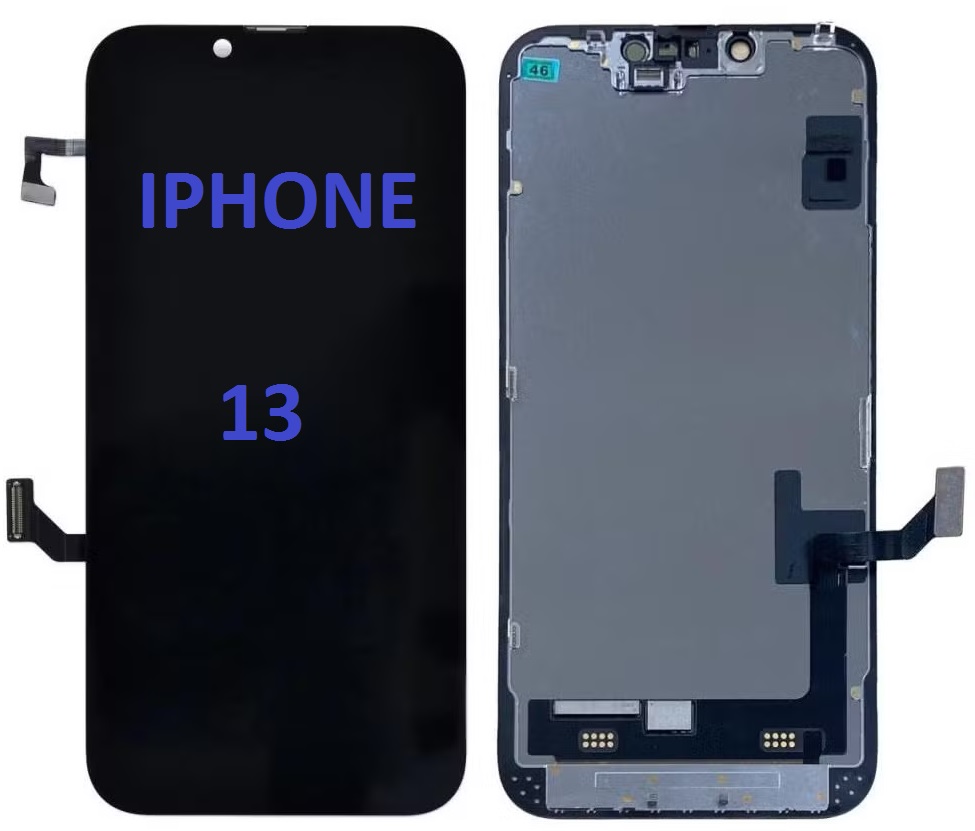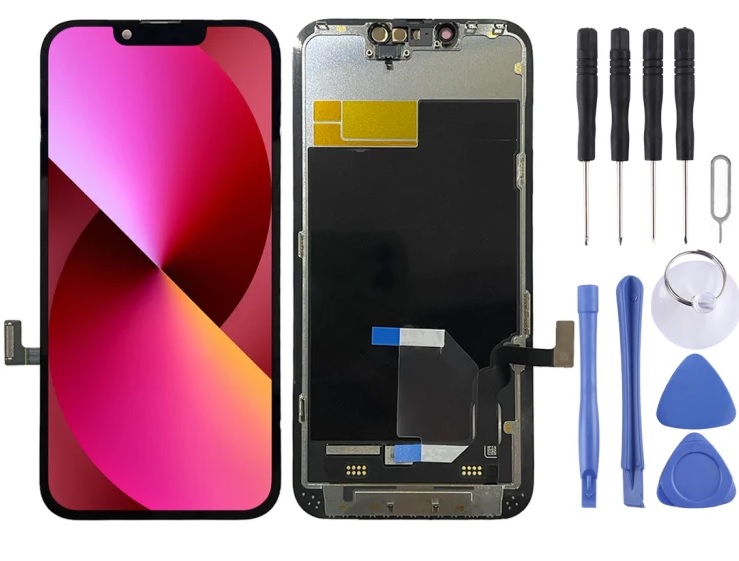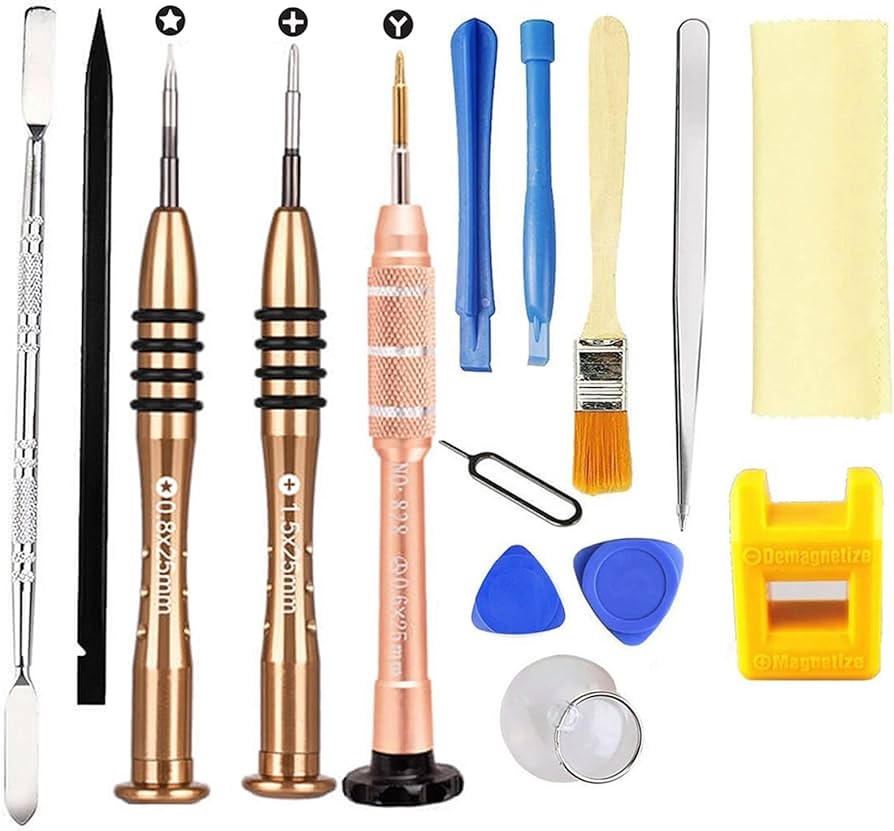
1. Introduction to iPhone 13 LCD Screen
The iPhone 13, released by Apple in 2021, features an advanced OLED display with improved color accuracy, contrast, and brightness levels compared to previous models. The display is one of the key features that enhance the user experience, making it essential for the phone’s overall performance. This document will provide a thorough overview of the LCD screen replacement process, the screen’s specifications, and its size, along with troubleshooting tips and considerations for repairs.
2. iPhone 13 Display Specifications

The iPhone 13 comes equipped with a 6.1-inch Super Retina XDR OLED display. Here are the primary specifications:
- Type of Display: OLED (Organic Light-Emitting Diode)
- Resolution: 2532 x 1170 pixels at 460 ppi (pixels per inch)
- Brightness: 800 nits (typical), 1200 nits (peak brightness for HDR content)
- Color Accuracy: Supports P3 wide color gamut and True Tone
- Screen Protection: Ceramic Shield front cover, making it stronger than previous glass fronts.
The display provides vivid colors, deeper blacks, and an overall superior viewing experience, contributing significantly to the iPhone 13’s appeal.
3. Importance of LCD/Screen in the iPhone
The display plays a crucial role in the iPhone’s functionality. It’s not just a visual output device but an interface that includes touch functionality, Face ID recognition, and the overall aesthetic appeal of the device. Any issue with the screen can degrade the user experience.
4. Types of Screen Damage
The iPhone 13’s screen can suffer from several types of damage:
- Cracked Screen: A common issue that occurs when the device is dropped or subjected to impact.
- Dead Pixels: Pixels that no longer function, leading to black spots on the screen.
- Color Distortion: Sometimes, the screen may show unusual colors or tint due to hardware failure.
- Touchscreen Malfunctions: The screen might become unresponsive, or there could be ghost touches due to internal issues.
- Backlight Issues: A faulty backlight may cause uneven brightness or the screen to appear dim.
- LCD Burn-in: Prolonged display of static images might leave a residual imprint on the screen, commonly seen on OLED displays.
5. iPhone 13 Screen Replacement Process
Screen replacement is a delicate procedure and must be done correctly to avoid damaging other components of the phone. Below is a detailed step-by-step guide to replacing the screen on an iPhone 13.
Tools and Materials Required:

- New iPhone 13 LCD or OLED screen
- Pentalobe screwdriver
- Triangular tool for opening the phone
- Suction cup tool
- Spudger
- ESD (Electrostatic Discharge) strap
- SIM card ejector tool
- Heat gun or hairdryer (for loosening adhesive)
Step-by-Step Process:
- Power Off the Device: Always ensure the iPhone is powered off to avoid short circuits or damage to internal components.
- Remove the Screws: Use a pentalobe screwdriver to remove screws around the device’s edge.
- Pry Open the Phone: Using a suction cup and a plastic pry tool, carefully open the iPhone, starting from one corner and gently working your way around.
- Disconnect the Battery: Once inside the device, disconnect the battery to avoid any electrical mishaps.
- Remove the Old Screen: Unscrew the brackets securing the screen’s connectors and disconnect the display’s cables. Carefully remove the screen from the phone body.
- Install the New Screen: Place the new LCD/OLED screen onto the frame and reconnect all the necessary cables. Make sure the screen sits flush with the body of the phone.
- Reassemble the iPhone: Reattach the internal brackets, reconnect the battery, and secure the phone back together.
- Test the Screen: Power on the device and check if the display functions properly, including touch sensitivity, display quality, and brightness levels.
6. Choosing Between LCD and OLED Replacement
While the iPhone 13 originally comes with an OLED screen, replacement screens can vary between OLED or LCD variants. Here are the key differences:
- OLED: Provides better color accuracy, deeper blacks, and superior brightness. OLED screens are more expensive but offer better performance.
- LCD: Generally cheaper than OLED screens and less vibrant but still functional. LCD screens are a more cost-effective option for repairs but may not offer the same performance as the original OLED display.
7. Common Issues After Screen Replacement
After replacing the screen, some users may experience certain issues, including:
- Touchscreen Sensitivity Problems: This could be due to improper installation or faulty components.
- Display Flickering: Could be caused by an issue with the cable connections or faulty display components.
- Screen Calibration Issues: Sometimes the colors and brightness may not match the original screen after replacement.
- Face ID Malfunction: Apple’s Face ID system uses the front-facing camera, which is often integrated into the screen. A replacement screen may affect the functionality of Face ID.
8. Cost of iPhone 13 Screen Replacement
The cost of replacing the iPhone 13 screen varies based on whether you choose to go with Apple or a third-party repair service:
- Apple Store Repairs: Apple offers screen replacements at a higher cost but ensures the use of original parts.
- Third-Party Repairs: Typically cheaper but may use non-original parts. The warranty on third-party repairs may not be as reliable as Apple’s.
9. DIY vs Professional Repair
DIY Repairs:
DIY repairs are a cost-effective option but come with risks. Without the proper knowledge or tools, you could damage your device further. Additionally, unauthorized repairs may void your warranty.
Professional Repairs:
Getting your screen replaced by professionals guarantees quality and reduces the risks of further damage. Professional repair shops are equipped with the right tools and experience to handle delicate repairs.
10. How to Maintain the iPhone 13 Display
Maintaining the screen is important for longevity. Here are a few tips:
- Use a Screen Protector: This will help protect against scratches and small impacts.
- Keep it Clean: Clean the screen with a microfiber cloth regularly.
- Avoid Extreme Temperatures: Exposure to extreme heat or cold can damage the screen and reduce its lifespan.
- Avoid Long Periods of Static Images: OLED screens are prone to burn-in when static images are left for prolonged periods.
11. Apple’s Warranty and Screen Damage
Apple offers a standard one-year warranty with the iPhone 13, which covers manufacturing defects but does not cover accidental damage, such as cracks or scratches. For accidental damage, Apple provides the AppleCare+ extended warranty plan, which offers screen replacement at a reduced cost.
12. Alternatives for Screen Repairs
For those who prefer alternatives to official Apple repairs, some third-party companies and services specialize in iPhone screen replacements. Some online platforms, like iFixit, offer guides and replacement parts for individuals to perform their repairs.
13. Advantages of Replacing Your Screen
- Improved Functionality: Replacing a damaged screen restores the full functionality of your device.
- Cost-Effective: In some cases, screen replacement is cheaper than buying a new phone.
- Preserving Data: Screen replacement allows you to keep your data intact, unlike when upgrading to a new phone.
14. Conclusion
Replacing the screen of your iPhone 13 can be a challenging task but is often necessary for maintaining the functionality and aesthetics of the device. Understanding the process, the options for repair, and the importance of using quality parts can significantly affect the longevity and performance of your phone. Whether you choose DIY repairs or professional help, the key is to ensure that the replacement is done with care to avoid further issues.